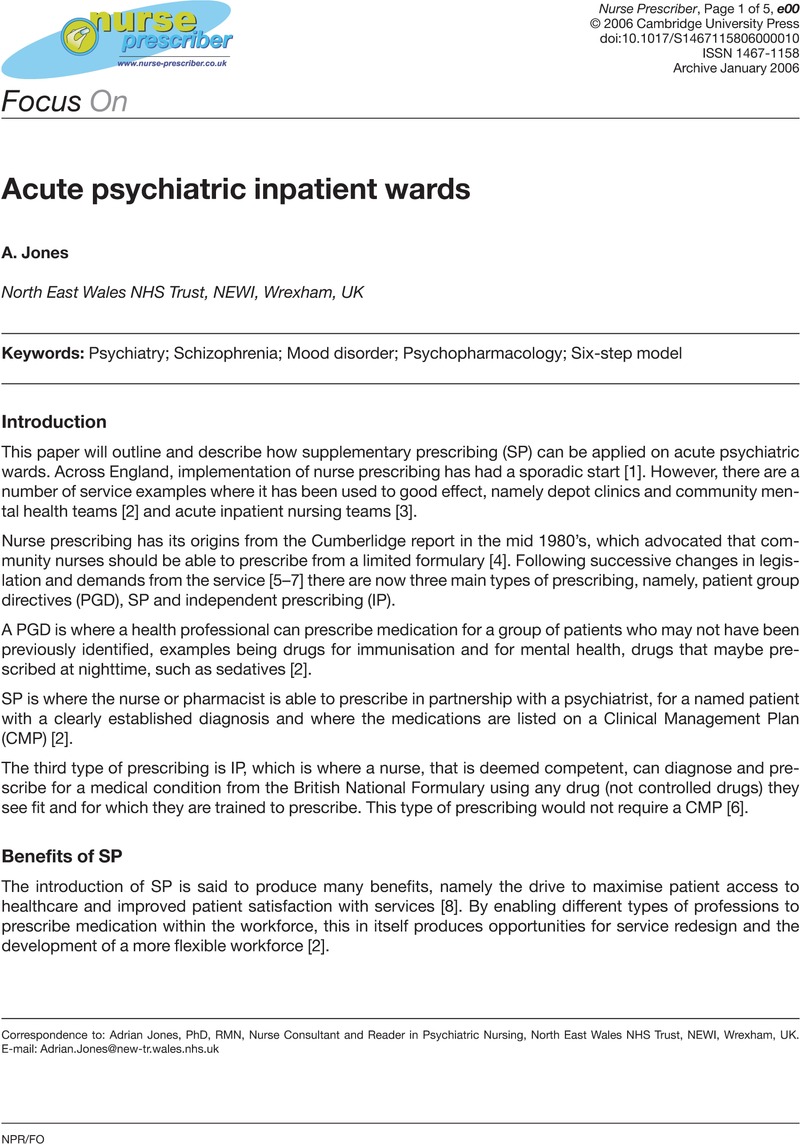Crossref Citations
This article has been cited by the following publications. This list is generated based on data provided by Crossref.
Murray, Aileen
2007.
Nurse prescribing in older persons' mental health.
Nurse Prescribing,
Vol. 5,
Issue. 9,
p.
401.
JONES, M.
and
JONES, A.
2008.
Choice as an intervention to promote well‐being: the role of the nurse prescriber.
Journal of Psychiatric and Mental Health Nursing,
Vol. 15,
Issue. 1,
p.
75.
JONES, A.
2008.
Exploring independent nurse prescribing for mental health settings.
Journal of Psychiatric and Mental Health Nursing,
Vol. 15,
Issue. 2,
p.
109.
JONES, A.
2008.
What are the nursing implications when using paliperidone prolonged release for people with schizophrenia.
Journal of Psychiatric and Mental Health Nursing,
Vol. 15,
Issue. 10,
p.
792.
JONES, M.
and
JONES, A.
2008.
Promotion of choice in the care of people with bipolar disorder: a mental health nursing perspective.
Journal of Psychiatric and Mental Health Nursing,
Vol. 15,
Issue. 2,
p.
87.



